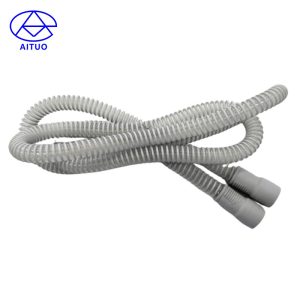A CPAP hose, an integral part of a CPAP system used to treat sleep apnea, typically lasts for a certain duration before needing replacement. The longevity of a CPAP hose can vary based on several factors such as usage frequency, maintenance, and the quality of the hose itself. Here’s a detailed overview of factors influencing the lifespan of a CPAP hose:
1. **Material Quality**: CPAP hoses are commonly made from flexible plastic materials such as polyvinyl chloride (PVC) or silicone. The durability of the hose largely depends on the quality of these materials. High-quality hoses tend to last longer and are less prone to damage.
2. **Usage Frequency**: The more frequently the CPAP machine is used, the faster the hose may wear out. Continuous bending, movement, and exposure to airflow can lead to wear and tear over time. Users who use their CPAP machines nightly may need to replace the hose more often than those who use it intermittently.
3. **Proper Maintenance**: Regular cleaning and maintenance are essential for prolonging the lifespan of a CPAP hose. Cleaning the hose according to manufacturer guidelines helps prevent the buildup of dust, dirt, and oils, which can degrade the material and affect performance.
4. **Environmental Factors**: Environmental conditions can impact the longevity of a CPAP hose. Exposure to extreme temperatures, humidity, or direct sunlight may accelerate deterioration. Storing the hose in a clean, dry place away from sunlight when not in use can help extend its lifespan.
5. **Handling**: Proper handling of the CPAP hose is crucial for preventing damage. Avoiding excessive stretching, twisting, or pulling can prevent the hose from developing cracks or weak points. Additionally, being mindful of where the hose is placed during sleep can prevent accidental damage from occurring.
6. **Manufacturer Recommendations**: Different manufacturers may provide varying recommendations regarding the lifespan of their CPAP hoses. While some suggest replacing the hose annually, others may extend the recommended duration based on the quality of materials used.
7. **Visual Inspection**: Regularly inspecting the CPAP hose for signs of wear and tear can help determine when it needs replacement. Look for cracks, holes, or stiffness in the hose that may indicate deterioration. If any damage is observed, it’s advisable to replace the hose promptly to ensure effective therapy.
In conclusion, the lifespan of a CPAP hose typically ranges from 6 months to 1 year, depending on usage patterns, maintenance, and environmental factors. By following proper maintenance practices and being attentive to signs of wear, users can optimize the lifespan of their CPAP hoses and ensure uninterrupted therapy.



